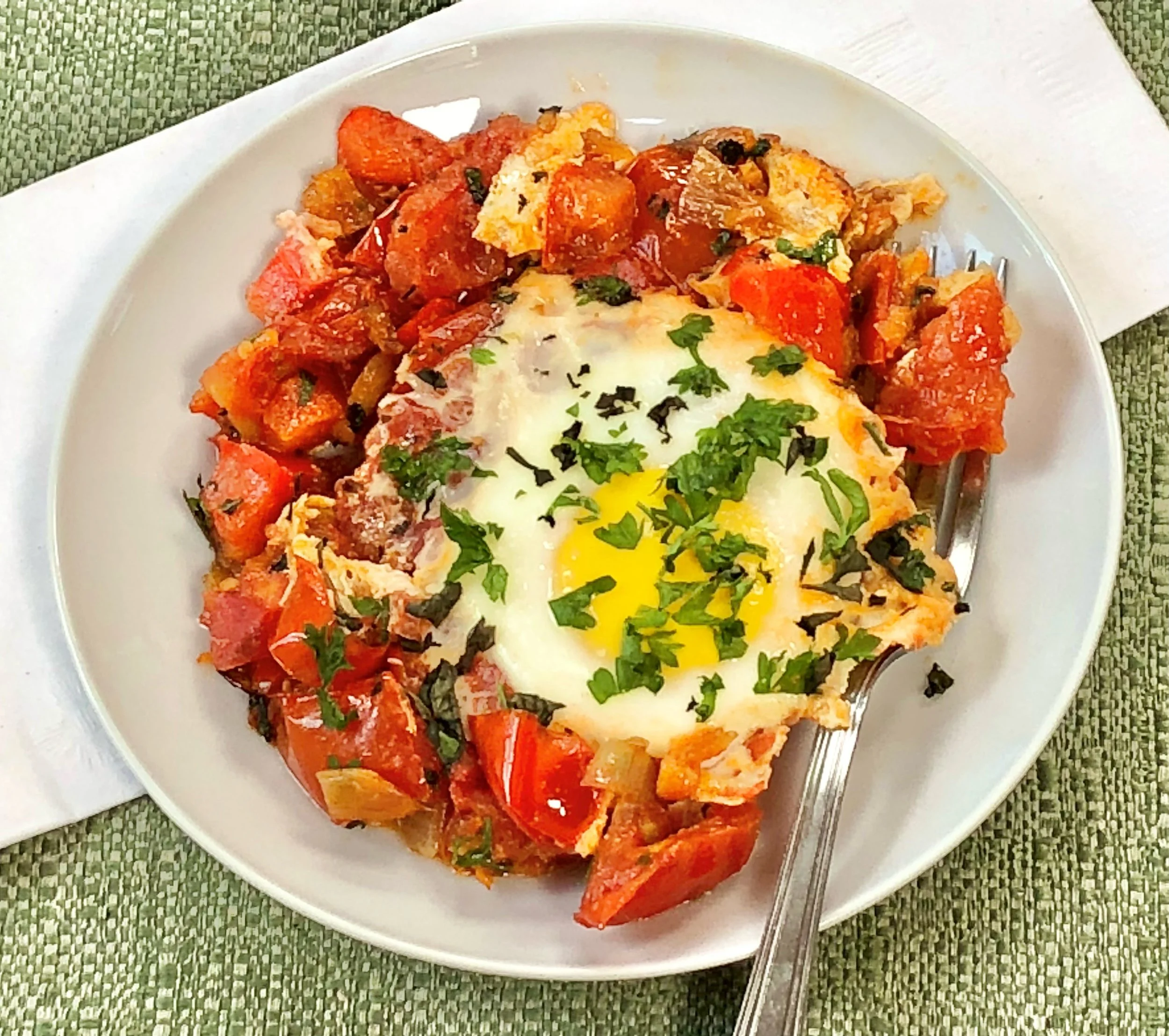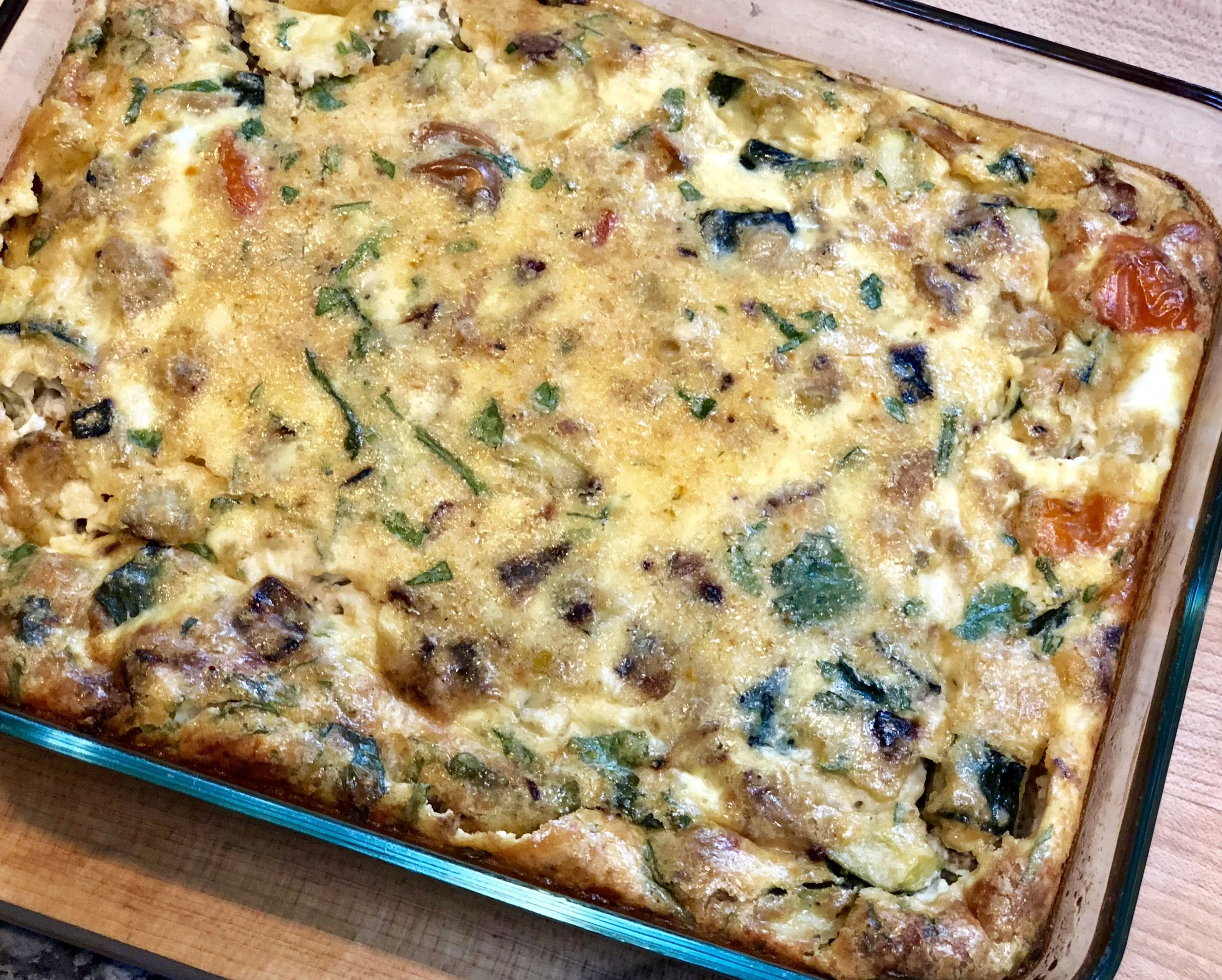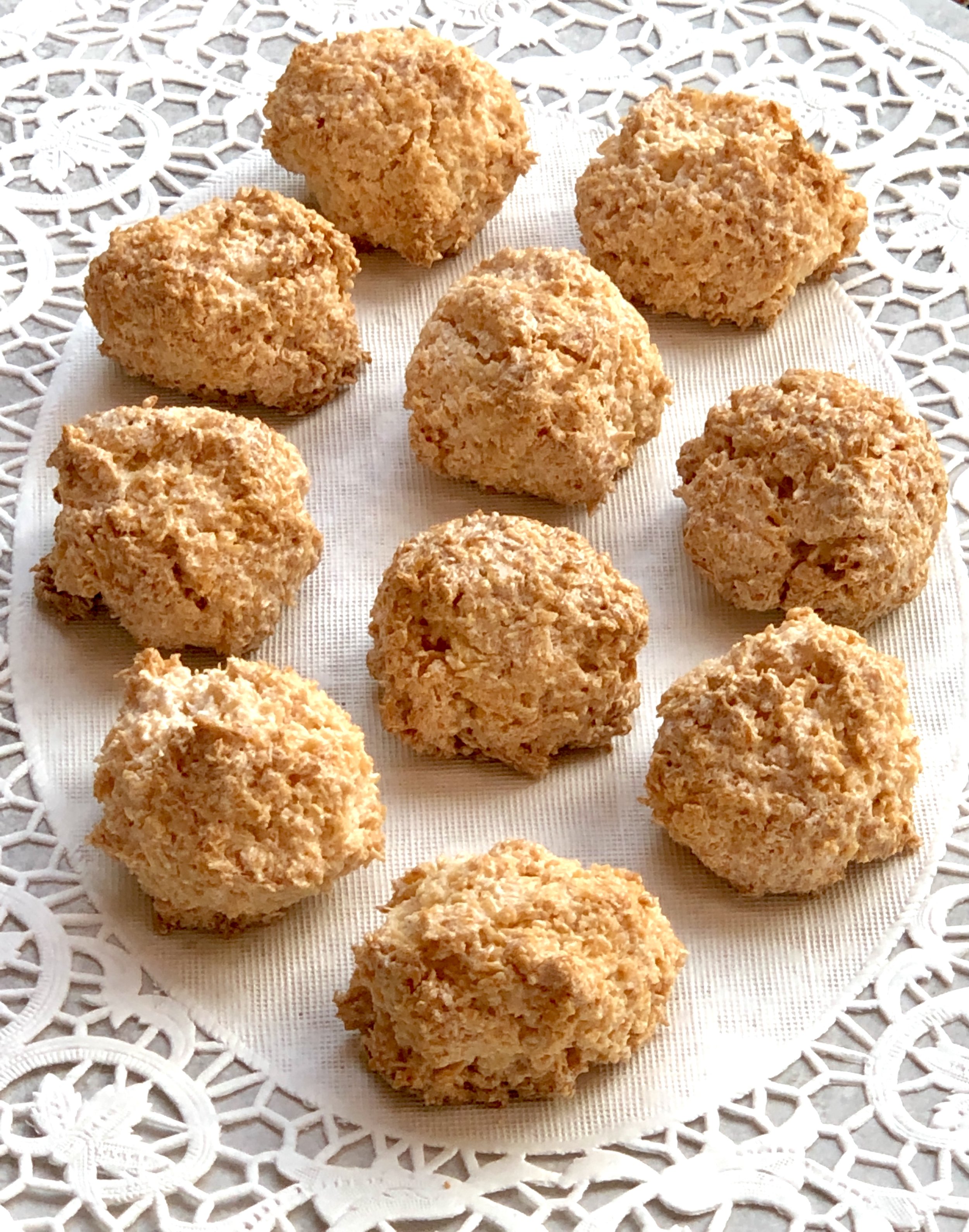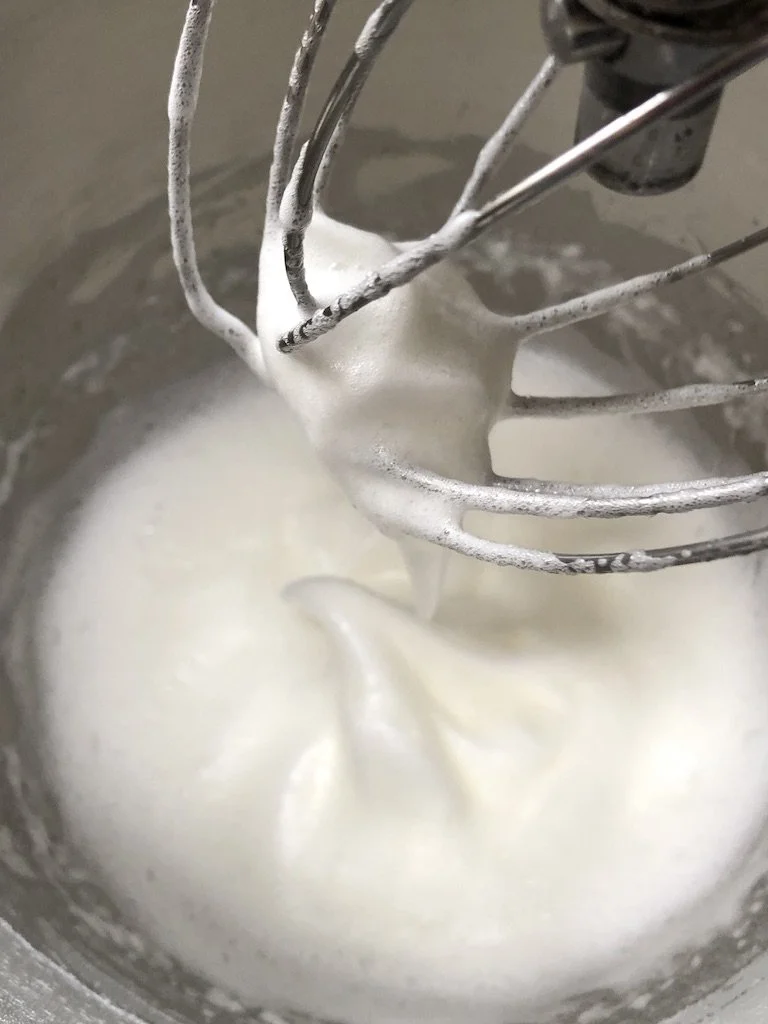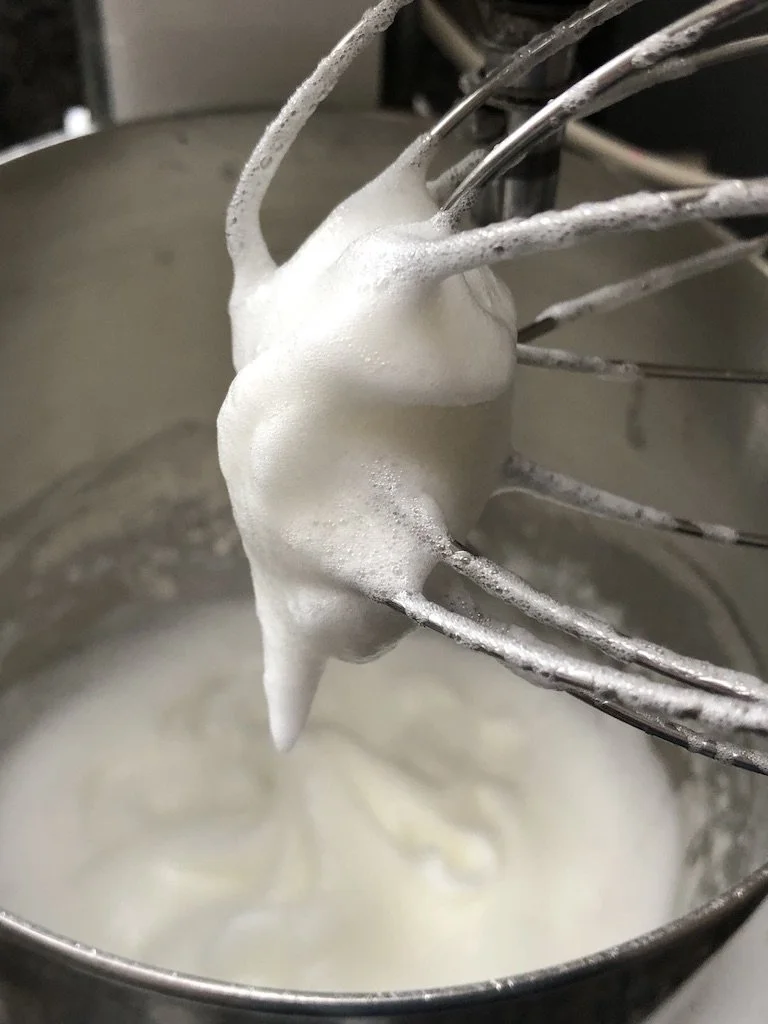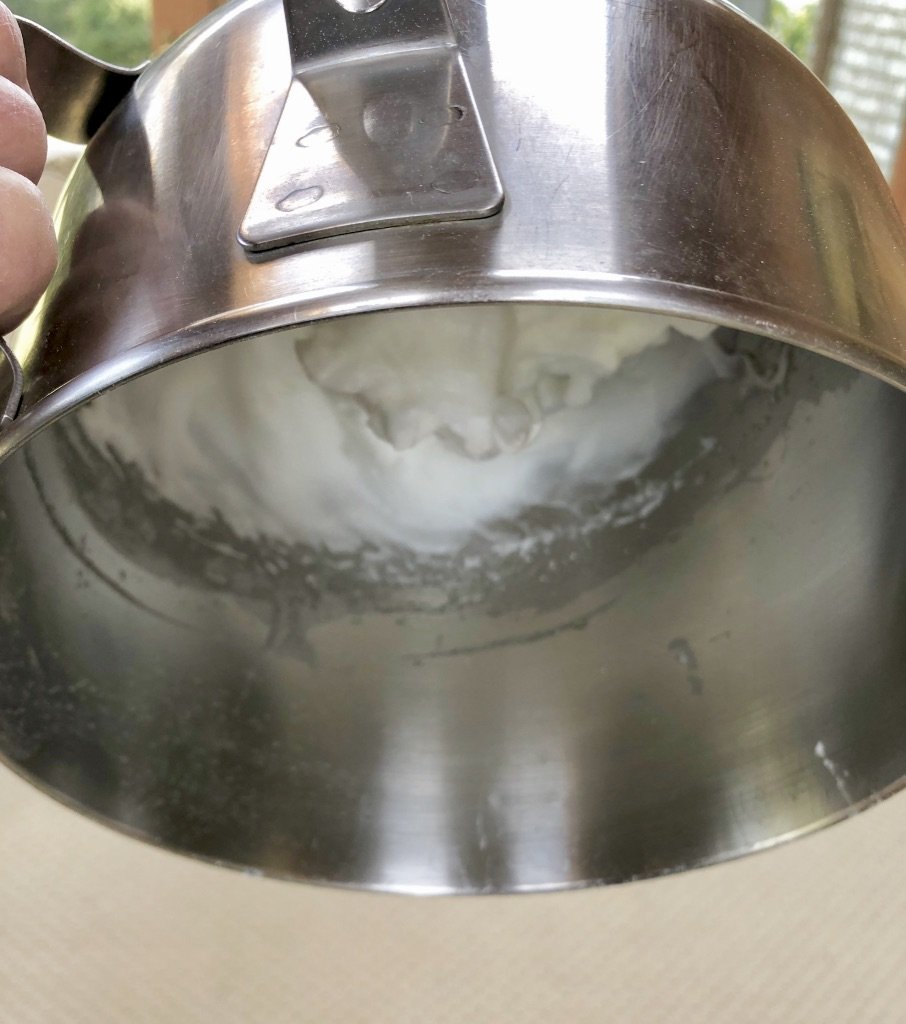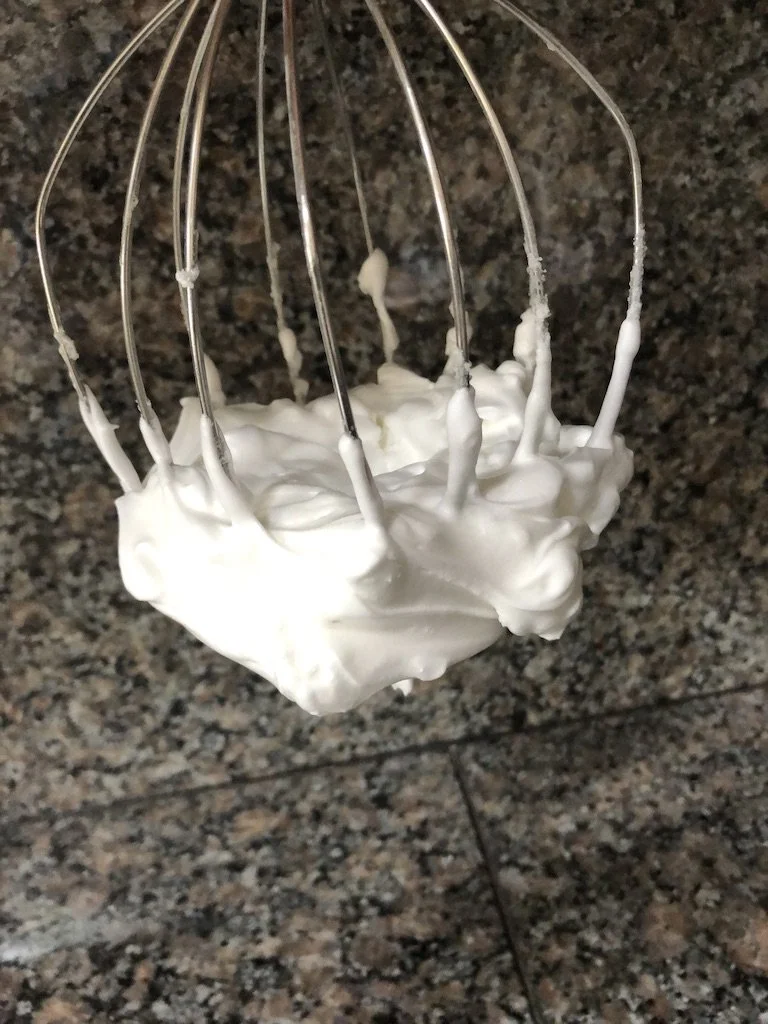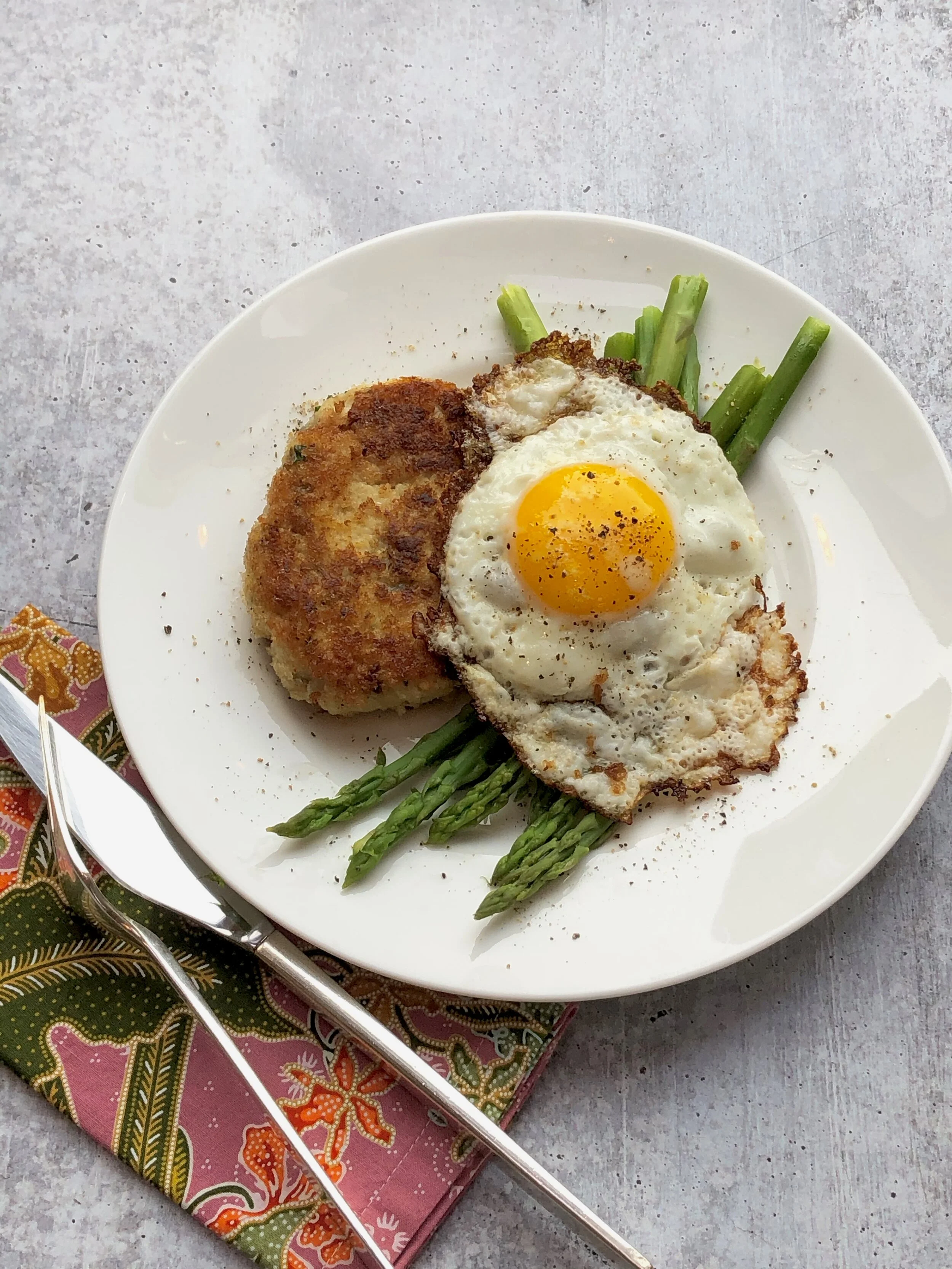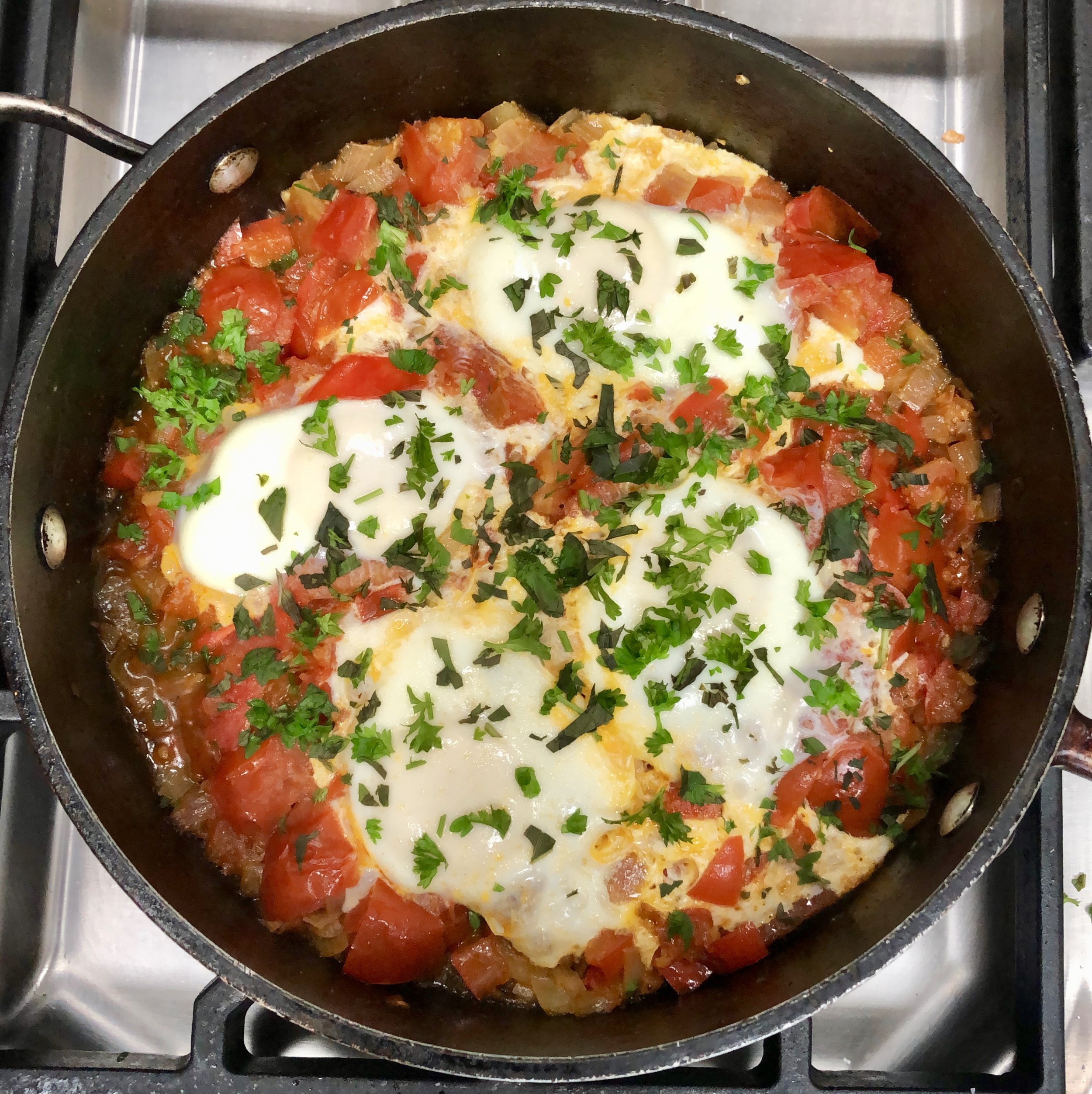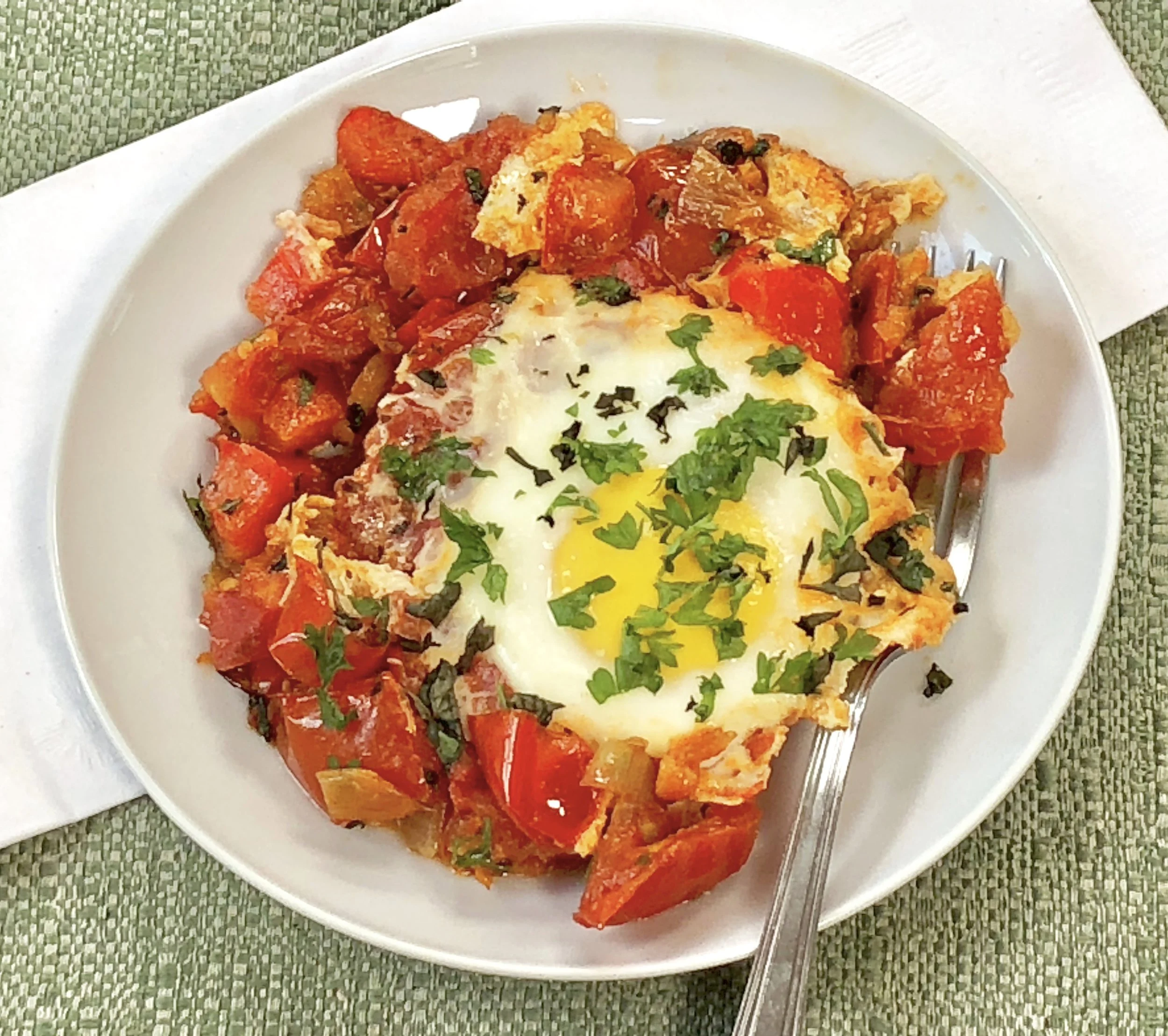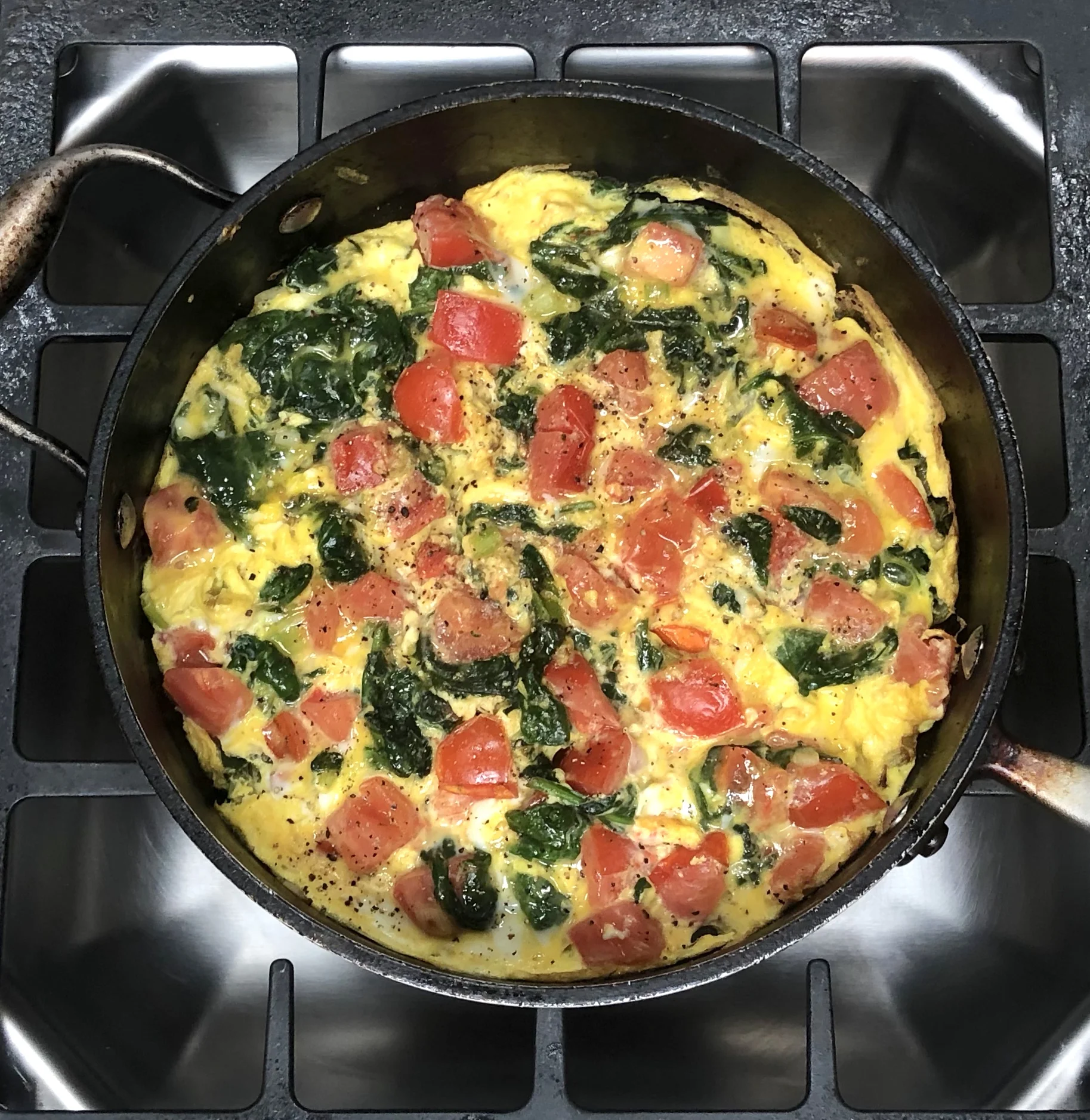Lately, Ed and I have not been in the mood for a meat meal, so I make pasta or pizza or a big salad and such. These days it’s really easy (also delicious) to put together a tasty vegetarian dinner. One of our favorites is Shakshuka - originally a North African dish but popular everywhere now. I season it differently from time to time (there’s a good recipe for Indian style Shakshuka right here on my website). But this one is my old standby. It’s seasoned with basil, which I realize is not traditional in North Africa or anywhere in the Middle East. But we like it this way. We also prefer a thick, chunky tomato base rather than a more sauce-like version that’s typical of restaurant Shakshuka that we’ve tried. Here it is; it’s a nice dinner but also a feast of a weekend breakfast.
SHAKSHUKA
1/4 cup olive oil
1 medium onion, chopped
1 red bell pepper, deseeded and chopped
2 small habanero or other chili peppers, deseeded and finely chopped
1 large clove garlic, finely chopped
6-8 plum tomatoes, chopped
1 tablespoon chopped fresh basil
1 tablespoon lemon juice
8 large eggs
3/4 teaspoon zatar
Heat the olive oil in a large sauté pan over medium heat. Add the onion, bell pepper, and habanero peppers. Cook for 4–5 minutes or until softened slightly. Add the garlic and cook briefly. Add the tomatoes, basil and lemon juice, stir, cover the pan, turn the heat to low and cook for 8–10 minutes, stirring occasionally, or until vegetables are very soft. Crack the eggs into a small bowl one at a time then transfer each one next to the other over the vegetables. Cover the pan and cook for 4–5 minutes or until the eggs are set but yolks are still slightly runny. Sprinkle with zatar. Serve each person 2 eggs and some of the vegetables.
Makes 4 servings
